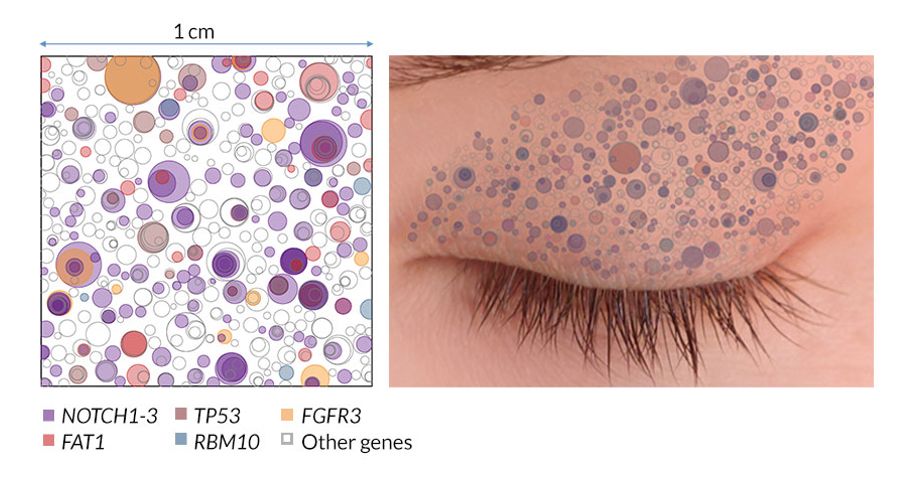Oops - called it a preprint when it’s actually a paper in Nature Genetics! Excited to see it out in the world!
12.03.2025 18:46 — 👍 3 🔁 0 💬 0 📌 0
Huge thanks to patients & families, Peter Campbell and @matthoare20.bsky.social who led this work, @profmarciniak.bsky.social and team for fantastic collaboration, @imartincorena.bsky.social and team for insights and support, @timcoorens.bsky.social, Daniel Leongamornlert, and many others! [12/12]
12.03.2025 17:28 — 👍 6 🔁 0 💬 0 📌 0

Overall, our findings reveal the liver's remarkable ability to evolve in response to genetic and acquired disease. Understanding these natural survival strategies could inspire new therapies — not just for A1AD, but potentially many other diseases. [11/12]
12.03.2025 17:28 — 👍 3 🔁 0 💬 1 📌 0

Additional experiments suggested these shortened proteins didn't just reduce aggregates by losing their own polymerisation capability. Instead, they may actively interfere with aggregation of the pathogenic allele. This 'dominant-negative' effect could offer new therapeutic strategies. [10/12]
12.03.2025 17:28 — 👍 4 🔁 0 💬 1 📌 0

We further studied these variants in the lab and discovered they were rapidly cleared by the cell’s proteasome, explaining their lower levels compared to the disease-causing form. [9/12]
12.03.2025 17:28 — 👍 3 🔁 0 💬 1 📌 0

Returning to human liver tissue, we confirmed this beneficial effect: shortened protein variants clearly reduced aggregate formation, demonstrating a natural 'rescue' mechanism in patients. [8/12]
12.03.2025 17:28 — 👍 3 🔁 0 💬 1 📌 0

We collaborated with @profmarciniak.bsky.social lab to validate these mutations in cellular models. The shortened protein forms indeed accumulated less, reducing disruption in the endoplasmic reticulum (ER). [7/12]
12.03.2025 17:28 — 👍 3 🔁 0 💬 1 📌 0


Remarkably, mutations frequently targeted SERPINA1 itself — specifically its last exon. We hypothesised that those C-terminal mutations shortened the Z-A1AT protein, preventing harmful aggregation and allowing mutated cells to dominate liver tissue. [6/12]
12.03.2025 17:28 — 👍 3 🔁 0 💬 1 📌 0

We analysed 5 liver samples from transplanted A1AT deficiency patients using laser-capture microdissection. We performed DNA sequencing on those tiny microbiopsies to map somatic mutations across liver tissue sections. [5/12]
12.03.2025 17:28 — 👍 4 🔁 0 💬 1 📌 0

Alpha-1 antitrypsin (A1AT) deficiency is caused by a genetic mutation ('Z') in SERPINA1, affecting the A1AT protein. Normally released into the bloodstream to protect the lungs, the mutant form aggregates inside liver cells, causing inflammation, cirrhosis, and eventually liver failure. [4/12]
12.03.2025 17:28 — 👍 3 🔁 0 💬 1 📌 0

Genes targeted by driver mutations vary by cell type and environment, influencing organ-specific patterns. Previously, we saw mutations in lipid metabolism genes dominate liver disorders linked to metabolic disease. Could this differ in other liver disorders? [3/12]
12.03.2025 17:28 — 👍 3 🔁 0 💬 1 📌 0

Somatic mutations are changes to DNA that accumulate in our cells as we age. While many are neutral, some ('driver mutations') give cells an adaptive advantage, causing them to grow into larger clones. By middle age, many tissues become patchworks of these clones. [2/12]
12.03.2025 17:28 — 👍 4 🔁 0 💬 1 📌 0
I study how mutations come about. Based at @columbiauniversity.bsky.social, previously at @normalesup.bsky.social
Researcher at the CIMR, University of Cambridge @MarciniakLab interested in cell biology, especially proteostasis and the ER.
Assistant Professor at MD Anderson Cancer Center | Cancer genomics, single-cell genomics, and somatic evolution
https://www.mdanderson.org/research/departments-labs-institutes/labs/ruoyan-li-laboratory.html
Wellcome Trust Clinical PhD Fellow in the Garnett Lab @sangerinstitute.bsky.social. Interested in cancer plasticity, multiplexed assays, ML, & comp bio.
https://ttszen.com/
Cancer programme Faculty @sangerinstitute.bsky.social & founder MosaicTx developing precision combination therapies. #Cancer, Functional genomics, biomarkers, target discovery, #organoid, #CRISPR. Proud 🇨🇦.
Assistant Professor of Hepatology at the University of Cambridge.
Honorary Consultant in Hepatology at Cambridge University Hospitals.
The leading provider of open source workflow orchestration software for data pipelines, cloud infrastructure & collaboration. From the creators of @nextflow.io
Open-source tool to simplify and streamline quality control analysis, from @seqera.io
The leading open source orchestrator for containerized, data-intensive pipelines on any infrastructure at any scale. From @seqera.io
Postdoc in neurogenetics | Sanders Lab at University of Oxford and IDRM | JRF at the Centre for Personalised Medicine
Cancer scientist. Gene editing. Dog lover. Australian in the UK.
senior group leader @sangerinstitute. evolutionary geneticist malaria & biodiversity. lifetime member of darwin's posse. obsessive tidepooler. hearts cephalopods.
our lab leads the Malaria Cell Atlas, UK BIOSCAN, and ANOSPP projects.
Cancer Research UK Career Development Fellow at the Wellcome Sanger Institute - gene editing - drug resistance - cancer
Human genetics, rare disease and de novo variant detection | selfish selection | mosaicism | cell competition | paternal age effects | spermatogenesis | testis
@University of Oxford @MRC- WIMM
Faculty in Generative and Synthetic Genomics at Wellcome Sanger Institute; CTO (part-time) at ExpressionEdits. Engineering DNA in mammalian cells to understand and build.
Head of Human Genetics & Senior Group Leader @ Wellcome Sanger Institute. Statistical geneticist working on complex diseases #ibd #firstgen.
The ICR is making the discoveries that defeat cancer.
We're a top UK academic research centre, a postgrad college, and a charity.
📍 London (Chelsea and Sutton)
https://www.icr.ac.uk/
Solve Biology
Head of Generative Genomics, Wellcome Sanger Institute, Cambridge, UK
Systems + Synthetic Biology, CRG, Barcelona
http://barcelonacollaboratorium.com http://allox.bio https://www.sanger.ac.uk/programme/generative-and-synthetic-genomics/
Evolution, cancer, immunology, math(s)
Ursula Zoellner Professor of Cancer Research
University of Cambridge
blundelllab.com
Artist, scientist, storyteller. Nature lover, nerd, and teacher 🌈
Current Artist in Residence @ Mount St Helens
PhD Molecular Engineering
Data Viz/Science Educator
Shop: arinraeart.etsy.com
Website: www.arinraeart.com
Links: https://linktr.ee/arinrae











